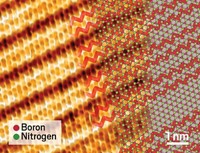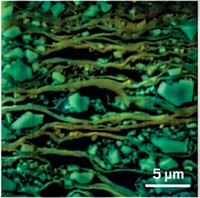Advertisement
Grab your lab coat. Let's get started
Welcome!
Welcome!
Create an account below to get 6 C&EN articles per month, receive newsletters and more - all free.
It seems this is your first time logging in online. Please enter the following information to continue.
As an ACS member you automatically get access to this site. All we need is few more details to create your reading experience.
Not you? Sign in with a different account.
Not you? Sign in with a different account.
ERROR 1
ERROR 1
ERROR 2
ERROR 2
ERROR 2
ERROR 2
ERROR 2
Password and Confirm password must match.
If you have an ACS member number, please enter it here so we can link this account to your membership. (optional)
ERROR 2
ACS values your privacy. By submitting your information, you are gaining access to C&EN and subscribing to our weekly newsletter. We use the information you provide to make your reading experience better, and we will never sell your data to third party members.
Materials
Graphene-based nanocomposites
July 24, 2006
| A version of this story appeared in
Volume 84, Issue 30
Single layers of graphite, known as graphene sheets, have been predicted to have excellent electrical, mechanical, thermal, and other properties, so dispersing these sheets in a polymer matrix could lead to exceptional electrically conductive composites. The problem is that the sheets tend to stick together, yielding clumpy materials. Now, a team at Northwestern University led by physical chemist Rodney S. Ruoff has solved that problem. The researchers first convert graphite into graphite oxide, which is then derivatized with phenyl isocyanate. This treatment allows the material to be separated into single sheets that can readily be dispersed in solutions of commercial polymers in polar organic solvents. A final reduction step yields a composite with excellent structural and electrical characteristics, according to the team (Nature 2006, 442, 282). A polystyrene-graphene composite they produced that contains only 1% graphene by volume offers a conductivity sufficient for many electrical applications, they report. These graphene composites aren't yet as electrically conductive as carbon nanotube materials, but they could be much less costly, comments Nicholas A. Kotov of the University of Michigan.





Join the conversation
Contact the reporter
Submit a Letter to the Editor for publication
Engage with us on Twitter